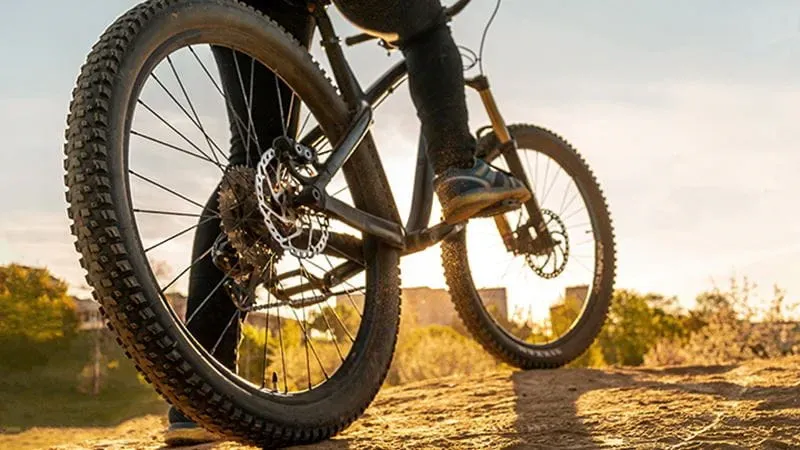Let's off-road

likes over the most demanding terrain
Would you launch yourself on a bike down a steep mountain trail or a flight of steps? Perhaps not, but some riders do it — for fun. Extreme cyclists ride their bikes off vertical cliffs and do cartwheels while flying or perform tricks when careering over craggy hillsides, seemingly heedless of any danger.
For these adrenaline junkies, mountain bikes are their trusted tool, and they have come a long way since the introduction of the first purpose-built model in 1978. Soon after that, the sport of mountain biking was born in Marin County, California, just across the bay from San Francisco.
Initially, the bicycle industry viewed mountain bikes as a passing fad that would soon die out, but in the following decades the boom in adventure sports and off-road cycling made them a long-term prospect. The heavier tubing, modified geometry and wider frame, fork and tires of the first mountain bikes soon gave way to the use of high-tech, lightweight materials and sophisticated suspension systems.
The suspension allows the wheels of a mountain bike to move up and down to absorb bumps while keeping the tires in contact with the ground for better control. Suspension also helps the rider and bike absorb the shocks produced when they land from the many jumps common in the sport.
The longer the travel or stopping distance of a shock-mitigating device, the better it will lessen an impact and ensure a smooth ride. It is the biking equivalent of gently applying the brakes on a car, allowing it to roll to a halt over some length. Original suspension designs made do with a mere five to seven centimeters of suspension travel, but soon some downhill bikes had travel of 25 centimeters or more.
As riders continue to push the envelope of what they can do, seals are becoming more and more important for effective suspension and thus the overall performance of the bike. With its long experience of creating sealing solutions, Trelleborg has successfully supported its customers to meet the requirements of riders.
“Seals play critical roles within a mountain bike’s suspension system, including in the rear shock absorbers and the front fork,” says Kevin Lai, general manager of the Trelleborg sealing solutions facility in Taiwan. As an important base for the research and production of high-end cycles, the country is a strong link in the global bicycle industry supply chain. According to the Taiwan Bicycle Association, exports reached a record high of more than 5 billion USD in 2021.
“I don’t think that anyone looking at suspension components would realize that they incorporate so many seals, each with their own role to play,” adds Lai. “In front forks there is a complete configuration of seals in the air springs, and in both the forks and shock absorbers there are bumpers, static, dynamic and rotary seals, plus scrapers and bushes. All of the sealing materials are matched to the requirements of the suspension, including characteristics such as low friction, lubricant compatibility and wear resistance.”
Lai explains that there is a constant innovation process in bicycle manufacturing, which in turn directs the development of Trelleborg’s own sealing solutions.
“The bicycle market has become a bit like the motor industry,” he says. “The top cycle manufacturers now bring out new models each year, trying to better the performance of previous models every time. That means we are always working with engineering departments on the next project to fine-tune mountain bike sealing systems.”
The latest evolution in mountain biking is the electric mountain bike. These types of bikes have a small motor powered by a rechargeable lithium-ion battery. In e-bikes, the motor provides power when riders are pedaling, adding power to each pedal stroke. So, for the e-mountain biker, it feels like pedaling a normal mountain bike, except with supercharged legs.
“E-mountain bikes are expected to drive growth in the mountain bike market in the future,” says Lai. “Whether for the traditional or electric versions of mountain bikes, we at Trelleborg expect to maintain our position as one of the leading suppliers of seals to manufacturers in Taiwan. We put our success down to the fact that we do not just provide the product, but the engineering services and expertise too.”
This is an article has been reproduced from Trelleborg's T-Time magazine. To download the latest edition, go to: www.trelleborg.com/t-time